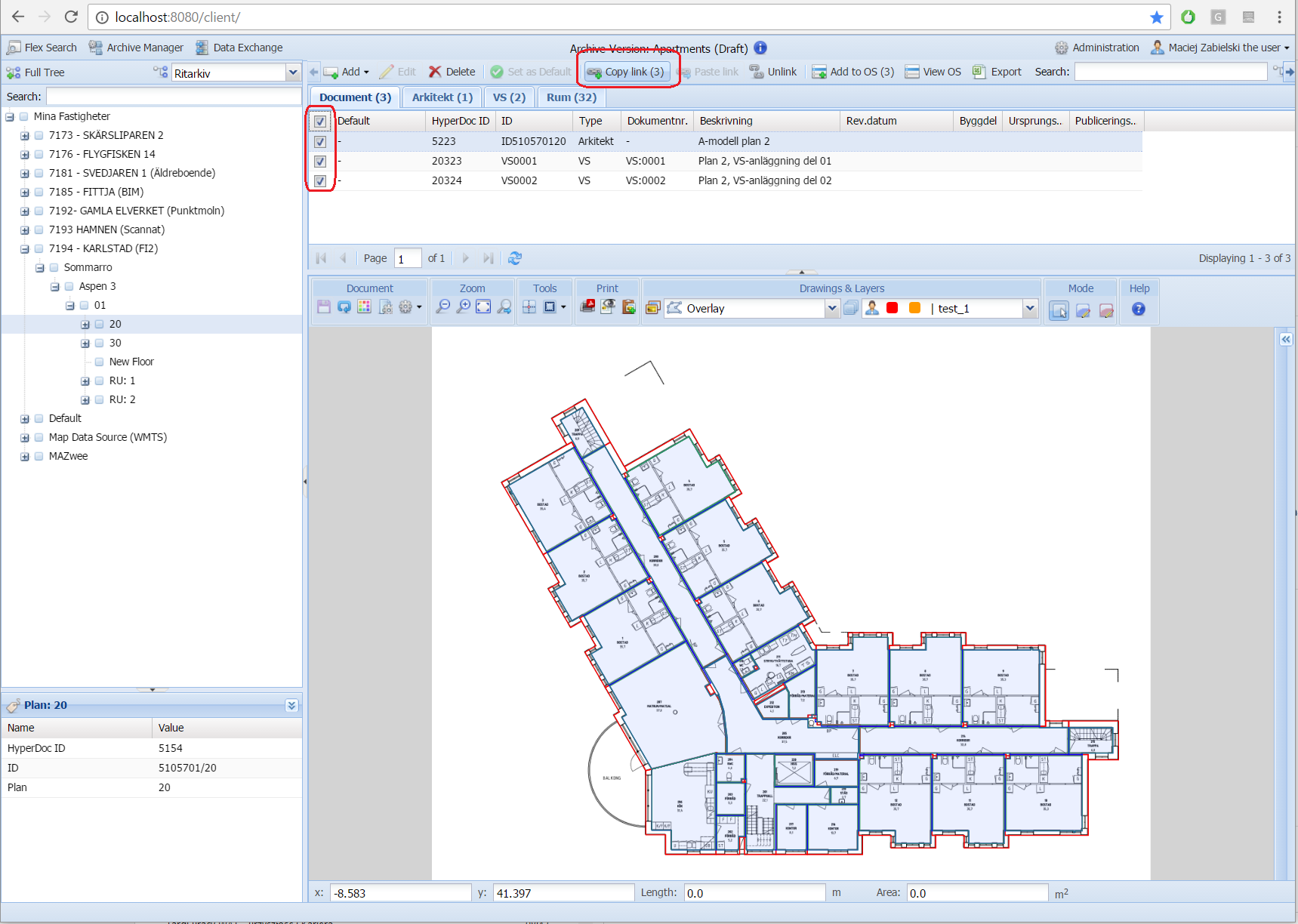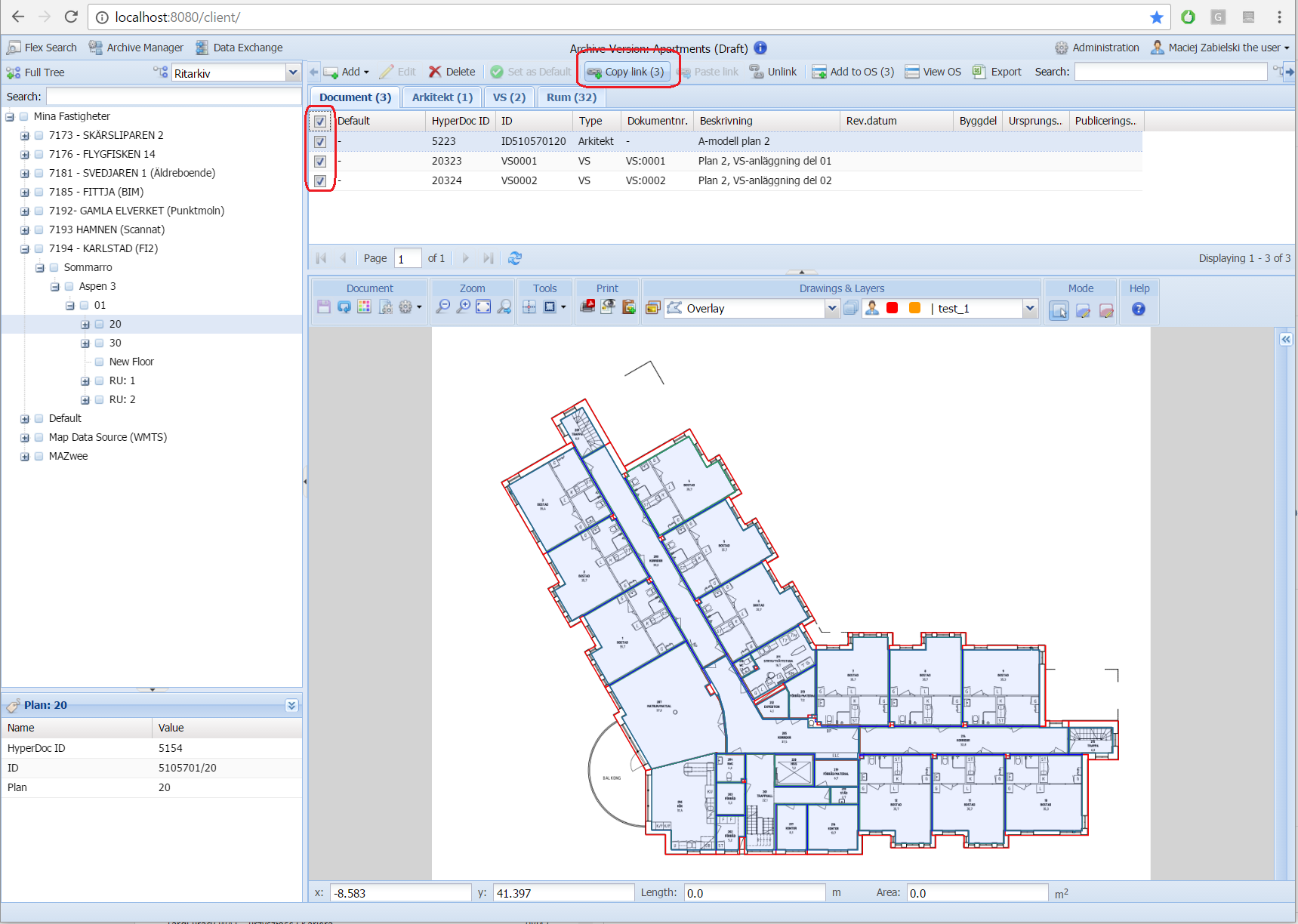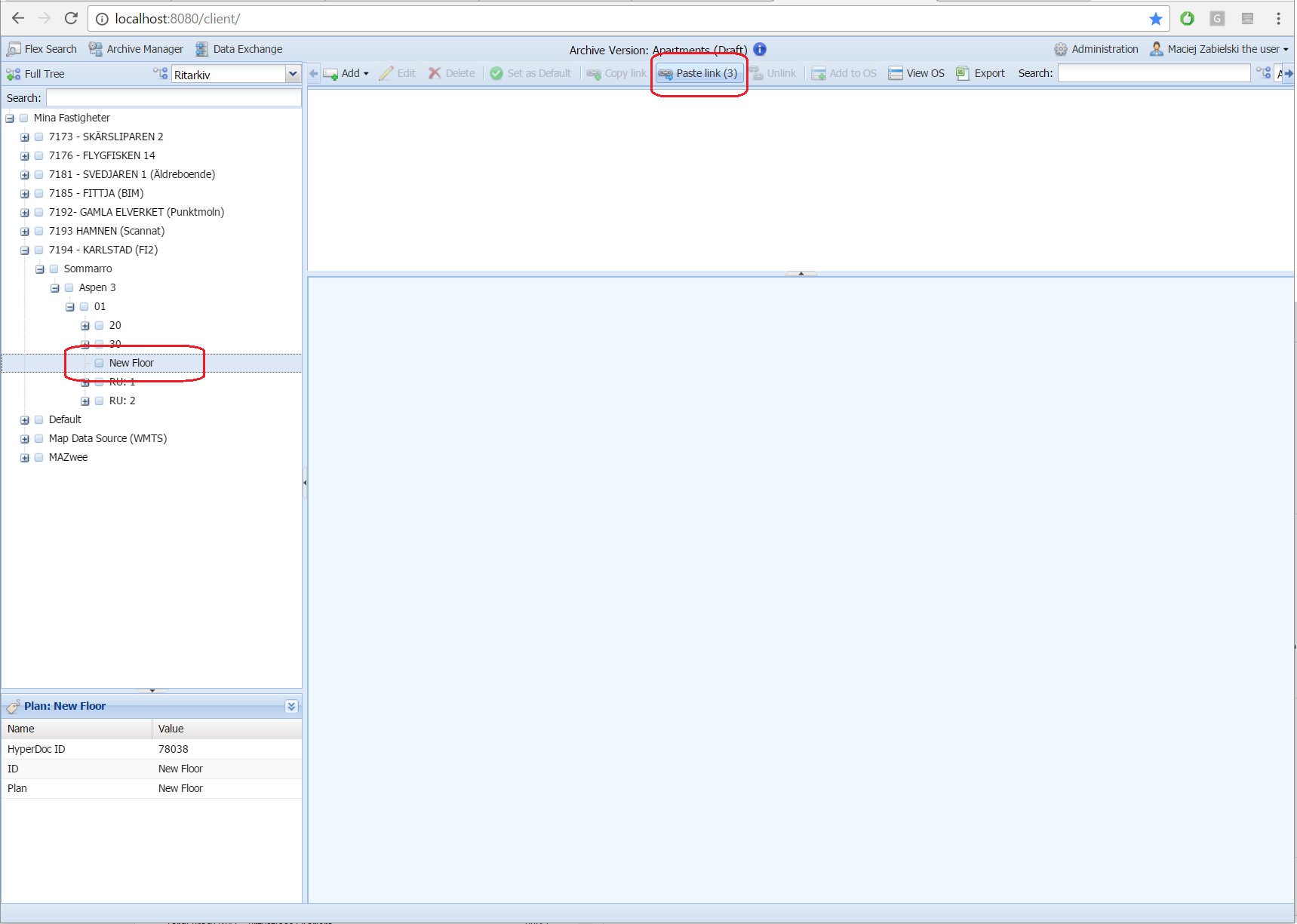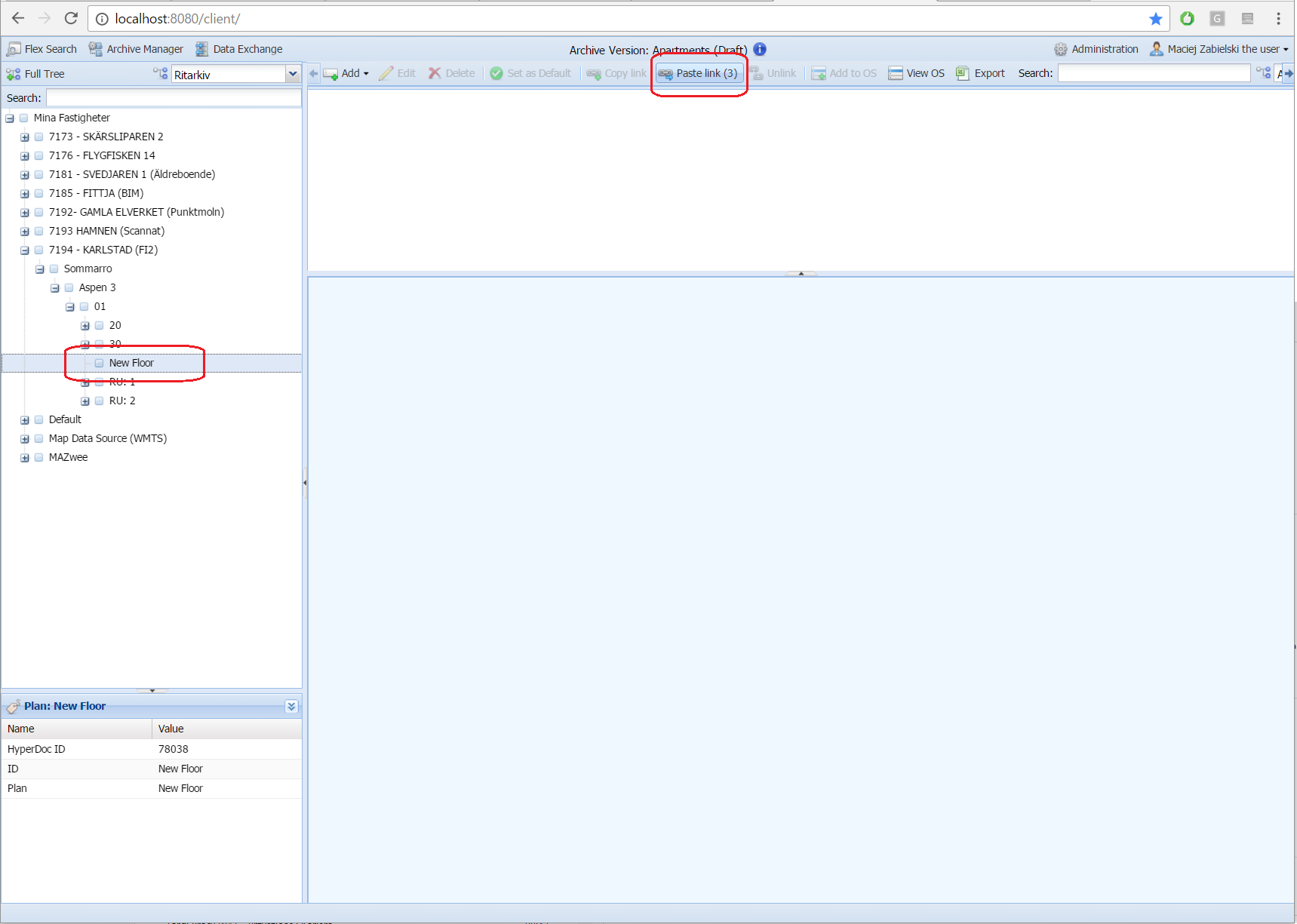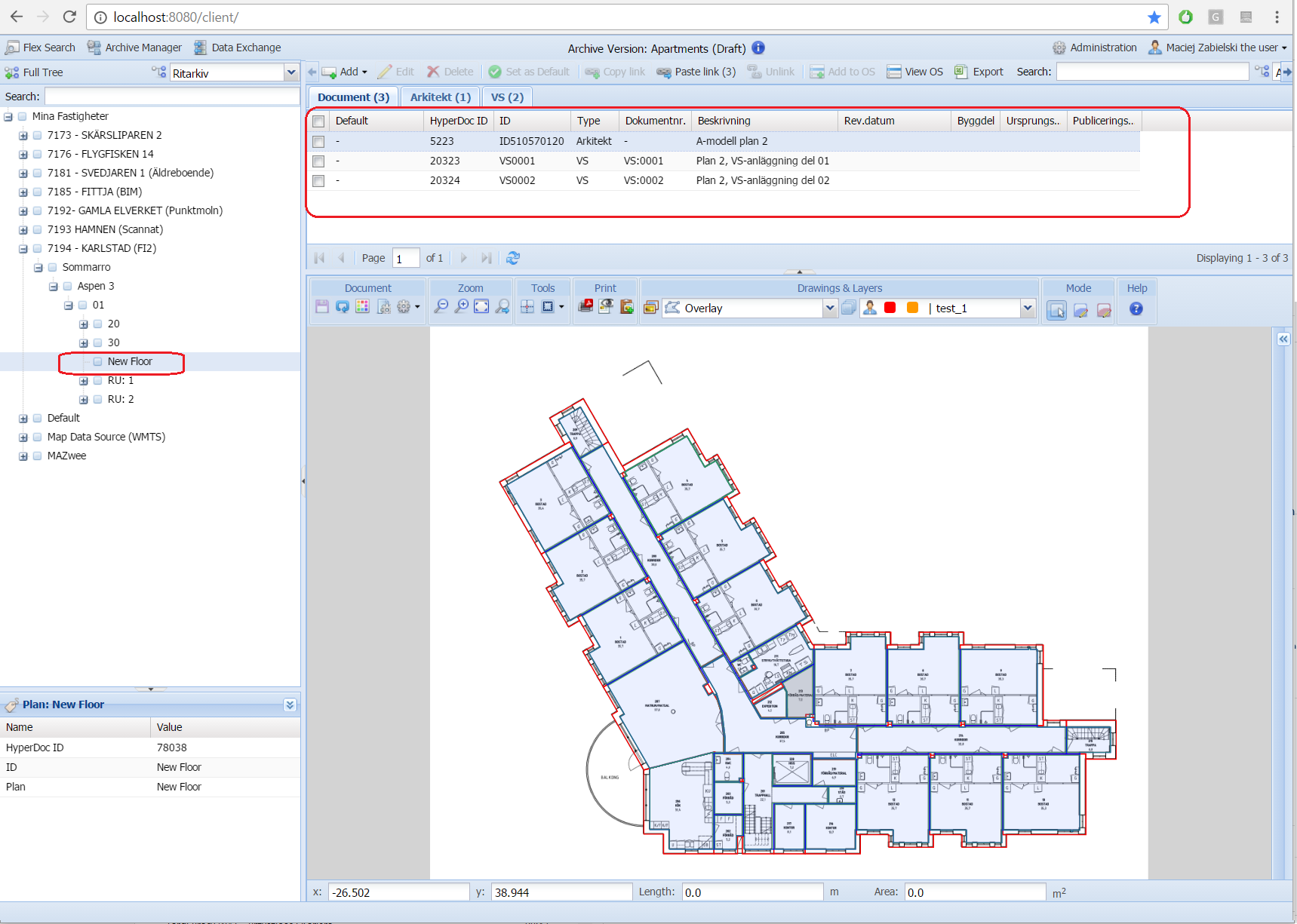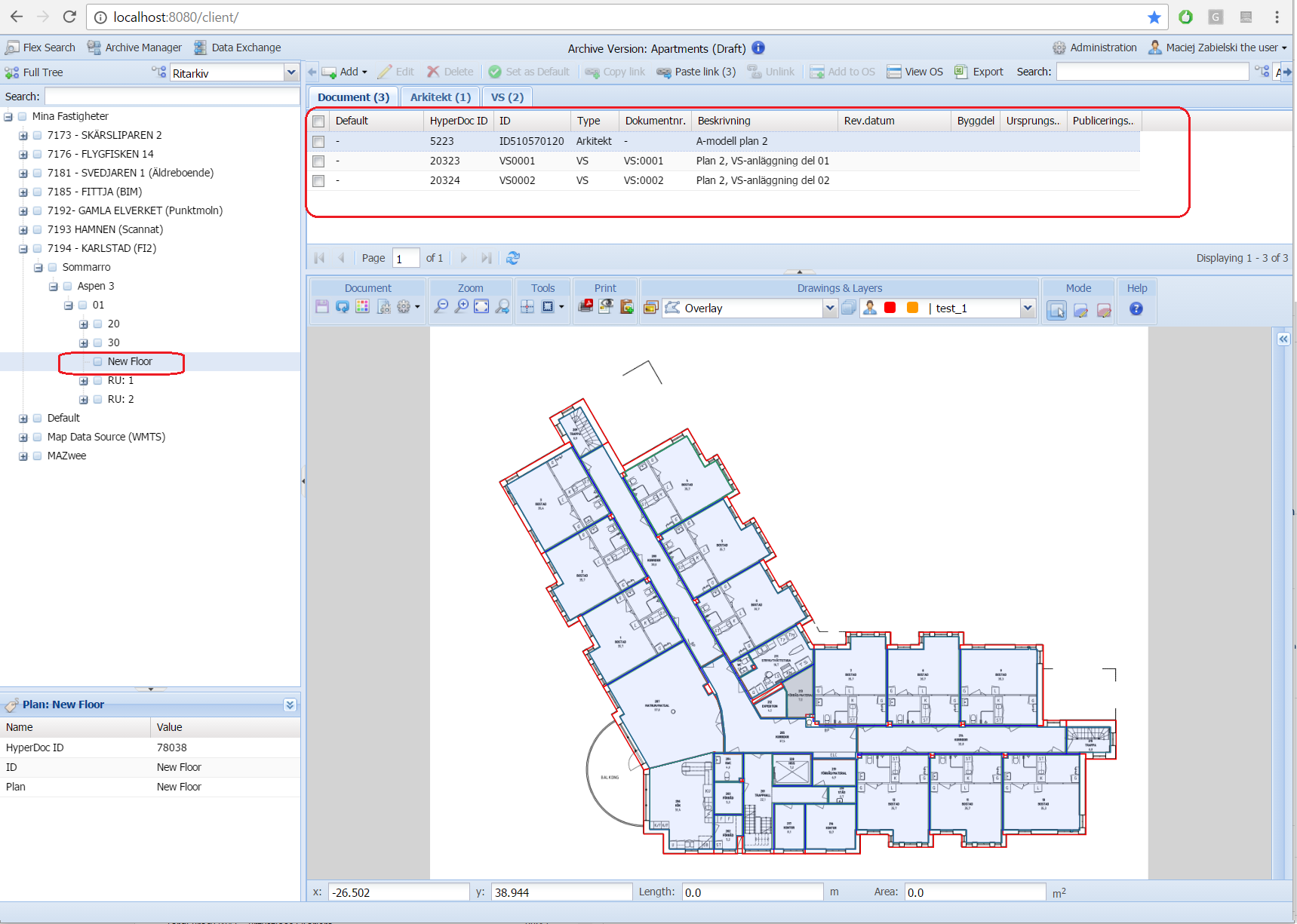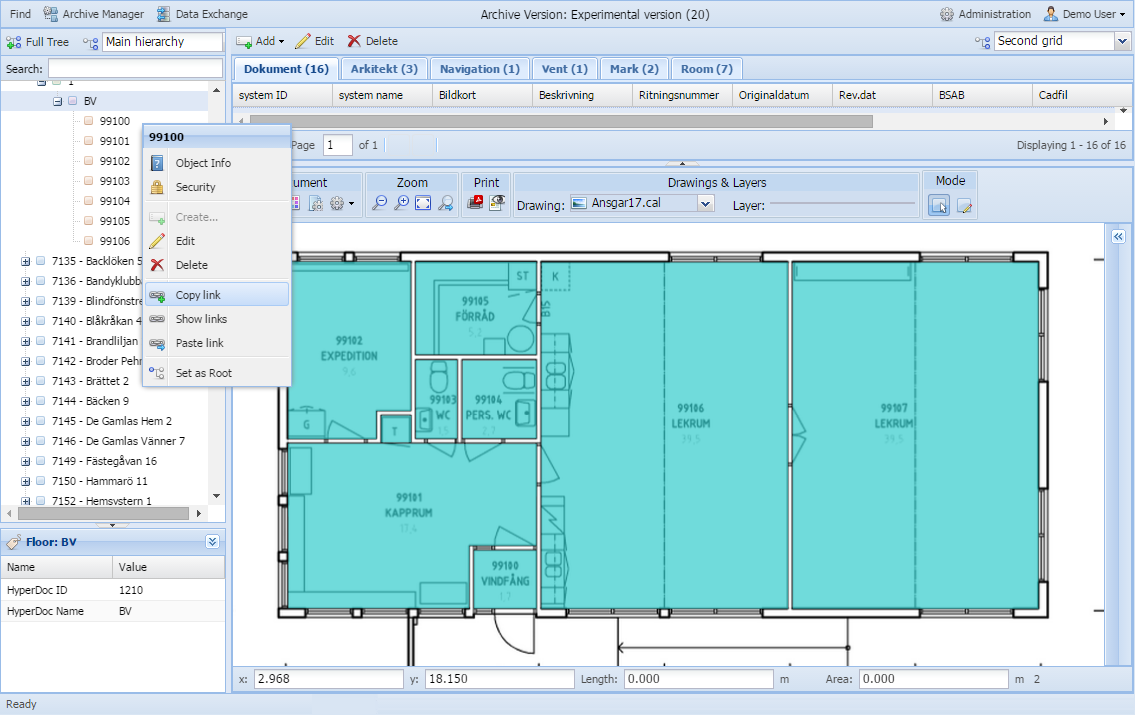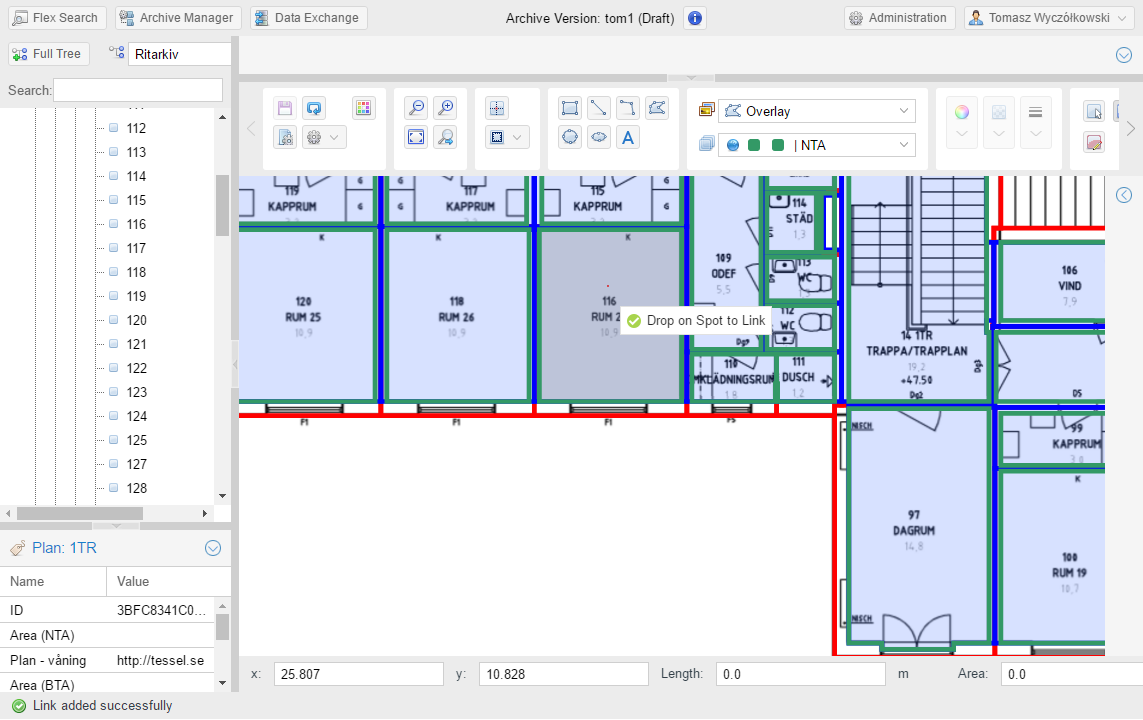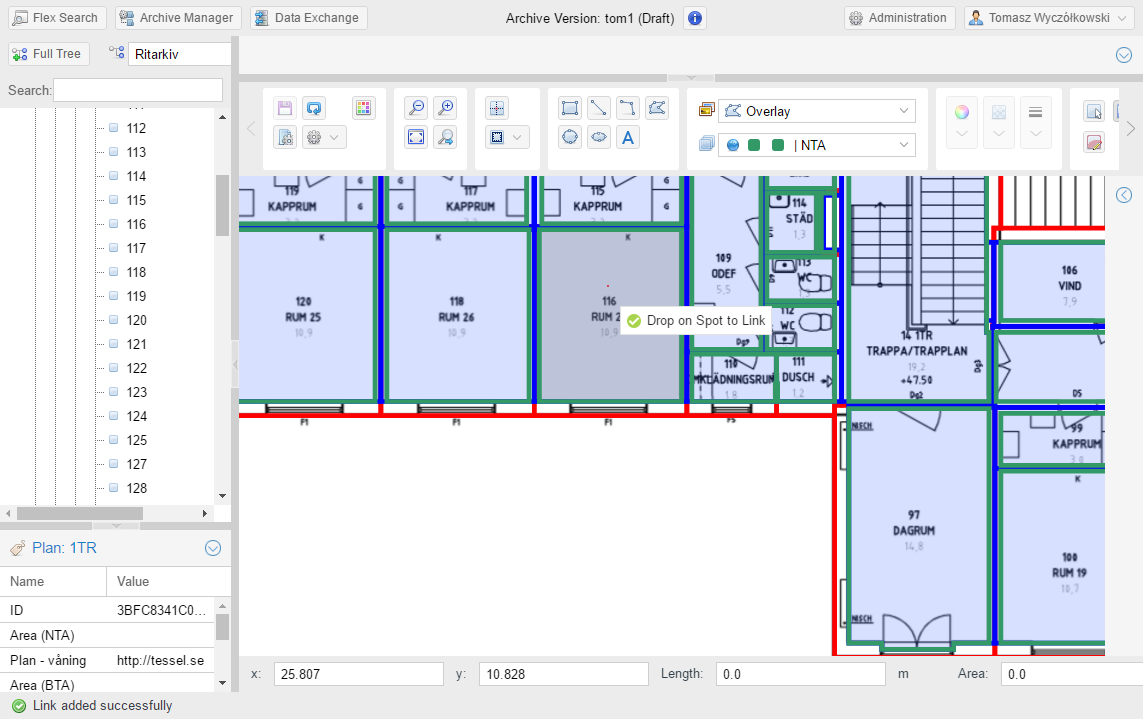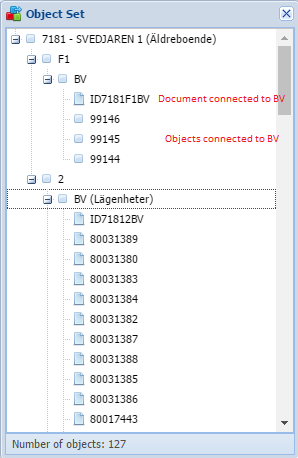...
| Excerpt |
|---|
There are two categories of links in HDC:
|
Understanding HDC links
To In order to discuss the linking system, we will use a simple set of objects as depicted on this schematic:
...
When discussing specific objects, we can see observe links that are both incoming originate from another object and outgoing lead to another objectother objects.
Taking For instance, considering a Floor as an example, we have , there is an incoming link from Building and several multiple outgoing links to Documents and Spaces.
Based on those links data By utilizing this linked data in conjunction with Perspectives, information can be presented when combined with Perspectives. For a typical standard building tree view, we need a perspective as followsthe required perspective would be:
Building → Building → Floor
Floor → Floor → Space
To show display documents in a grid view, we will need a perspectivethe necessary perspective would be:
Floor → Floor → Document
Managing Links
A show links function can be used to see how the underlying links are organized.
![]() Using To understand the organization of underlying links, you can utilize the show links function.
Using To understand the organization of underlying links, you can utilize the show links function.
![]() For advanced users, it is recommended to use linking functions in the Links panel and on the context menu is recommended for advanced users.
For advanced users, it is recommended to use linking functions in the Links panel and on the context menu is recommended for advanced users.
A series On the context menu for each object, a range of functions is provided to show, copy, and paste links is available on the context menu for each object.
...
When an object is right-clicked, a popup menu shows up appears, and a copy function will show how many links will displays the number of links to be copied.
When using the Paste function, links from the clipboard will be pasted to onto the selected, right-clicked object.
![]() Direction The direction of the link will always be as follows: Clicked object → object → clipboard objects.
Direction The direction of the link will always be as follows: Clicked object → object → clipboard objects.
A sample below illustrates a typical situation, where for a building we have one incoming link from property, and several outgoing links for Floors and Documents.
The data is the filtered into specific views based on Perspectives.
...
Managing Links in a Grid View
Managing links within a grid view using three basic functions available in a grid view is the simplest and most intuitive approach. It This method makes linking a lot much easier without the need to follow the needing to adhere to link direction rules.
Linking It's important to note that linking buttons in the Grid View always relate correspond to the parent object selected in the tree view!
If that sounds odd, think about that as working on this seems unfamiliar, consider it as similar to working with files within a folder. The Grid view View can be compared to showing likened to displaying the contents of a folder content. You can try that out test this by following those these steps:
Select a Floor floor that has contains linked documents linked, check all needed documents. Notice that Copy links required documents, and observe that the Copy links button becomes activated showing a , displaying the number of links that can be copied.
When the links are copied, a a Paste button button is activated showing a number of links in a clipboard. Now select a new object where you want to link the documents:
Click Click the Paste button button and the documents will be linked under the selected object:.
If you wish want to remove the linked objects, simply check check them and use use the Unlink function function.
Default Links
As each Each object can have multiple links, we can distinguish the but there is always a main link called the (default) link. This This default link will be used when Show is used when the Show Object's Graphical Representation action is triggered.
![]() When When the Show All Representations action is triggered, a number of Views is are prepared. Such These Views can be iterated using "next/previous" buttons.
When When the Show All Representations action is triggered, a number of Views is are prepared. Such These Views can be iterated using "next/previous" buttons.
Copy & Paste links
Link You can easily copy a link to any object can be easily copied into "clipboard" (Right click on any object reveals Copy Link button)by right-clicking on the object, which reveals the "Copy Link" button.
Links to multiple selected objects can be copied at once
Previously copied link links can be pasted to onto any object, including vector elements on in the drawing.
Context menu for all objects visible in the GUI has Paste Link button. Duplicate links are simply omitted.
Drag and drop - link creation
Users can easily
Within the GUI, a context menu with a "Paste Link" button is available for all visible objects. Duplicate links will simply be omitted.
Drag and Drop - Link Creation
Users can effortlessly create links between Tree objects and spots on a drawing by simply dragging the object from the Tree over to the selected spot and dropping it over it.
| Info |
|---|
Drag and drop can only be done in Viewer Edit mode! |
Delete
...
Linked Object
When deleting an object is deleted, all its links are also deleted.
Delete is done with removed. The deletion process involves the subtree of the object according to based on the selected perspective (as defined in General System Settings). Only Only objects visible in the selected perspective will be deleted, ; linked objects from other perspectives will not be affected.
If For example, if there is a link from Space a space to Building a building and we want to delete Floor a floor in "Deep Delete Mode," , the Link link to Building the building will not be followed for the "Building -> Floor -> Space" perspective.
...
When an object is selected for delete Object, have deletion and it has children, than you can see Preview of all Objects preview all the objects that will be deleted..
Popup Properties
| Excerpt |
|---|
If the spot have has a valid link than , by hovering or clicking on it (based on your settings), you can see it's its linked object properties. |
...
Default Object in Grid View Tesslet
After selection of object a selecting an object in the Tree View tesslet, a number set of linked objects are is loaded into a Grid View.
If no object is marked designated as default, a the first tab will be opened , and a first object (document) and the initial document will be selected and showndisplayed.
To alter modify this behavior, user users can choose one select an object in from that set and use utilize the Set As Default function function.
Automatic selection of tab works The automatic tab selection operates as follows:-
For a given source object (e.g. Floor) and perspective (e.g. Document), only one target object can be
...
designated as default.
...
The same object will be
...
designated as default in parent class tabs (e.g. Document and Architect).
...
If no tab was previously selected, the first tab will be opened.
...
If there was a previously selected tab
...
, the last used tab will be opened
...
only if it contains any objects
...
; otherwise, the first visible tab will be opened.
...
When a default object is set, the corresponding tab and page containing that document will be opened.
...
| Note |
|---|
Edit right is needed for rights are required for the source object to use utilize the Set as Default button button (rights for Object selected in Tree). |
| Warning |
|---|
ImportantThe Default Object is based on determined by the connection between the Tree Object and Grid Object in given within the specified perspective. That means This implies that each Grid Perspective can may have a different Default Object (, even if the Objects are the same). |
